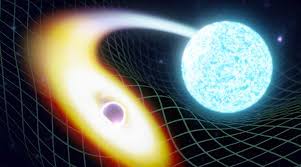CURRENT AFFAIRS
Get the most updated and recent current affair content on Padhaikaro.com
LIGO spots the first collision between neutron star and black hole
- Integrity Education, Delhi
- 30, Jun 2021

- Laser Interferometer Gravitational-wave Observatory (LIGO) and the Virgo Observatory detect gravitational waves from the distant cosmos.
- Until now, the LIGO-Virgo collaboration (LVC) of gravitational waves detectors has only been able to observe collisions between pairs of black holes or neutron stars.
- First confirmed detection of a neutron star-black hole (NS-BH) collision was observed in Jan 2020.
- The discovery is named GW200105
About Neutron Star and Black Hole
- When a star that is more than eight times as massive as the Sun runs out of fuel, it undergoes a spectacular explosion called a supernova.
- What remains can be a neutron star or a black hole.
- Neutron stars are typically between 1.5 and 2 times as massive as the Sun, but are so dense that all their mass is packed into an object the size of a city.
- Black holes are even more extreme. There is no upper limit to how massive a black hole can be.